Different ways of Stretching Watercolour Paper
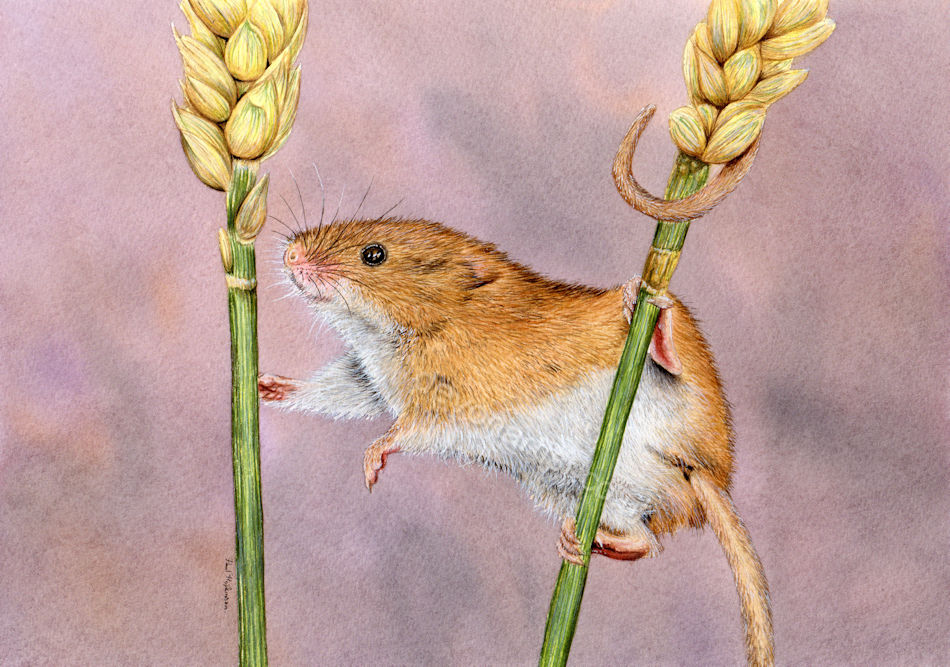
There are so many ways of stretching watercolour paper. You can simply wet the back of a sheet and gum tape it down to a board. Alternatively, soak the paper in a tub for a few minutes and attach it to a specially made stretcher board. Another way is to gum tape the wet paper down to a board then staple around the edges, so it dries drum tight. I have tried all of these methods, not always successfully!
One thing to remember is that if your paper is 140lb weight sized or less, and you intend on using a lot of wet in wet techniques, it will need stretching to help prevent warping issues.
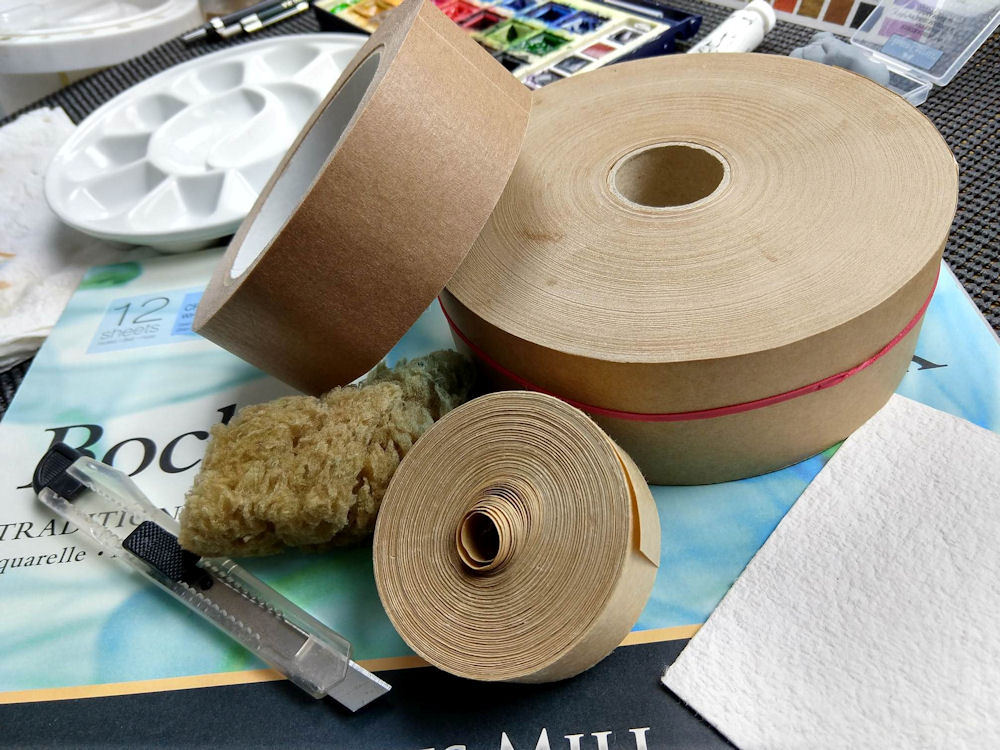
Gum tape
Unfortunately, this is something which I have never had much success with. You are supposed to wet the tape by dipping pre-cut lengths into a bowl of water. You then lay at least an inch over the edge of the already soaked watercolour paper. I have found however that the tape can start to lift when dry. Should you be using an old board for stretching paper, you can add heavy-duty staples around the edge of the wet paper. This will ensure it dries nice and flat.
This method does work well, but you are then left with the need to remove all the staples after you have completed your painting. This is quite time-consuming, and also I don’t like damaging my boards with staples.
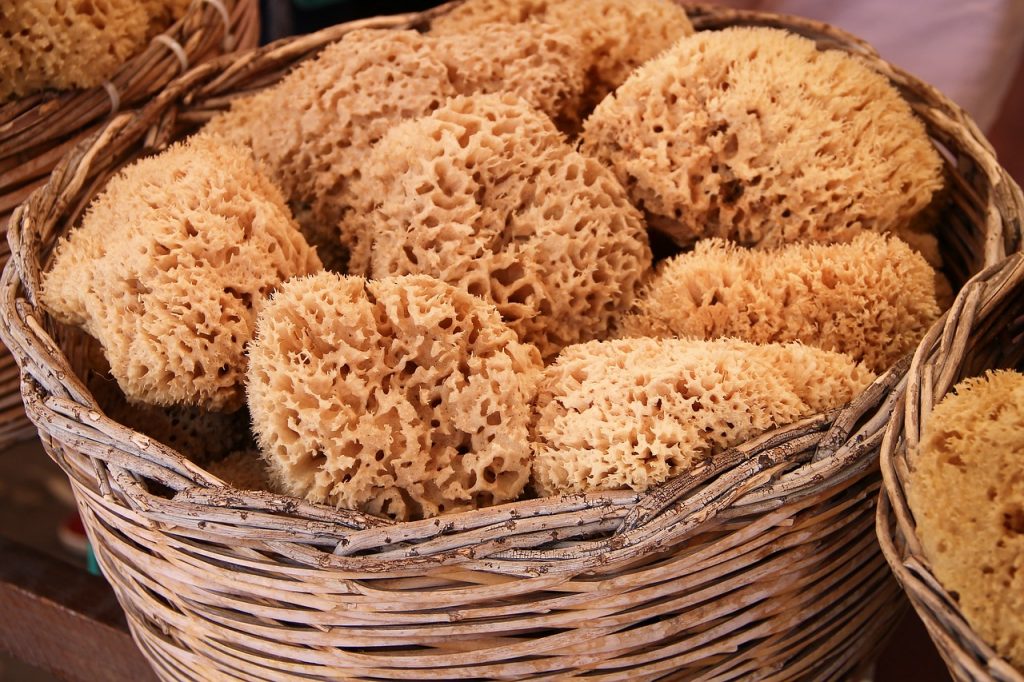
Wetting the back of watercolour paper
This is a quick method to stretch paper, and it does work ….. well sort of. Use a wet sponge to go over the back of a sheet of paper a few times. However, be careful not to rub the water in, or you risk damaging the paper. Once soaked, you then move the wet sheet to a dry board, placing it wet side down. Attach your masking tape to the dry side and this will hold the paper down flat whilst it dries. This can work, but you may need a bit of trial and error to have success every time.
That said, lightly wetting the back of a painting that has warped (cockled) and sticking it to a board, as detailed above, can be a good way of flattening out a bendy painting.
I would personally try this out on an old painting or test sheet first just to make sure I am confident with the method before I ruin things!
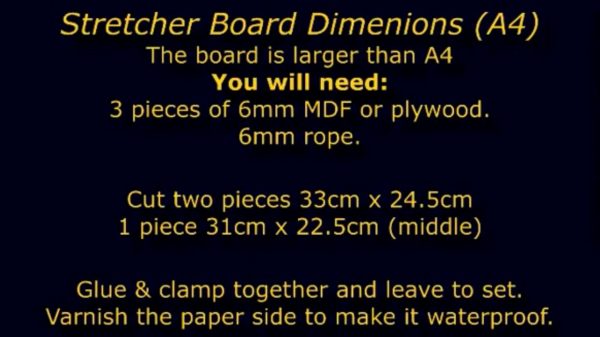
Stretcher boards
Shop bought stretcher boards work well, but you do have to work with pre-made sizes. I have made my own using three thin sheets of plywood, with one sheet smaller than the other two. Glue all three together, with the smaller one in the middle, allowing an even gap for the sandwich.
Seal the wood with a couple of coats of exterior varnish, and all is ready for wetting the paper in the bath tub for a few minutes.
This is ideal for those different paper sizes you want. I find it particularly useful for A3 and A2 size paintings. So here is my own different way of stretching watercolour paper.
How I used my stretcher board
Prepare a solid surface to work on covered in an old cloth. Lay the wet watercolour paper onto the surface and place the stretcher board centrally on the paper. Lift one edge of the board upwards and gently ease the paper into the gap between the boards. I actually found an old paintbrush helped with this. With the paper partially in the gap, hold it in place with some climbing rope or plastic tubing cut to size. Repeat the process but keep an eye out for any air bubbles. Use a wet sponge to gently ease these out before finishing with the fourth side.

Pre-stretched block pads
For speed and complete ease of use, my preferred choice for the majority of my paintings is to use a block pad of watercolour paper. This is literally all ready to go and of all the blocks I tend to favour the *Bockingford Block. The paper is pre-stretched and is glued around all four edges with just a small gap at the top of the sheet. You will get very minimal cockling with this type of paper. When your painting is finished, simply slide a palette knife or guitar pick into the gap. Take it carefully around the pad to remove the sheet of paper. Definitely my preferred choice for a non hassle way of painting. And no need to mess about with different ways of stretching the watercolour paper yourself any more.
Hope this helps a little,
Paul
PS, “Keep them brushes wet!”
* I may earn a small commission at no extra cost to you from the link above.


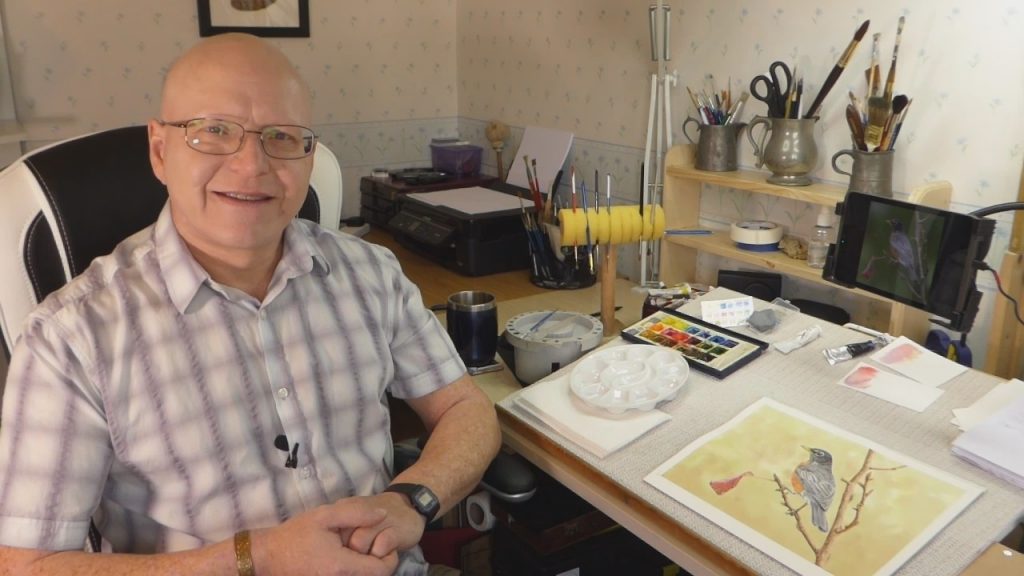


6 responses
wow, it’s like we’re connected psychically (is that a word? lol) Been doing some classes and having to prepare paper and it’s been a bit of a struggle to prepare paper especially larger sheets ( North American size 15″x23″) For smaller things I like your suggestion of prepared paper blocks!
Hi Jan, yes as you know there are quite a few different methods for stretching watercolour paper and it can be a little bit of trial and error for most of them. But yes a pre-stretched block pad of paper is ideal! Paul 🙂
Hi Paul, a related question, more on warped finished paintings
I saw a video on Youtube where somebody used a smoothing iron to flatten out the painting, it looked a bit risky to me, also like how hot do you set the temperature
Any experience with that?
Hi Andre, to be honest with you even though I have heard of this method it’s not one I would personally try. I would constantly feel that I may damage the paper and hours of painting detailed work. But if I was to try people do say to have the iron on a warm setting, so for one it doesn’t burnt the paper. You would need to place a sheet of card or even a tea towel of sorts over the top first. If you do try this do this on a test scrap piece of paper first.
My preferred method would be to dampen the back of the paper (not soaking it though), turn it over then masking tape it to a dry. clean board to dry overnight. You would have to overlap the masking tape a good half an inch onto the watercolour paper though so bear this in mind.
Hope this helps,
Paul 🙂
Hi, does the weight of the paper influence the effectiveness of the stretching technique? 🙂
Hi Tomáš, I’ve only ever used 140lb papers, but I do know that the heavier the paper, the less you will need to stretch it as it won’t cockle or warp quite as much. However, the heavier the paper, the higher the cost as well, so it all depends on what you intend to paint and if it would require large washes. Paul